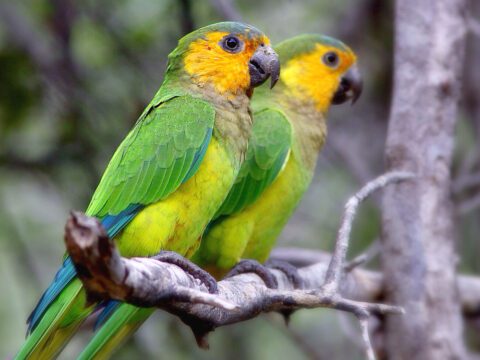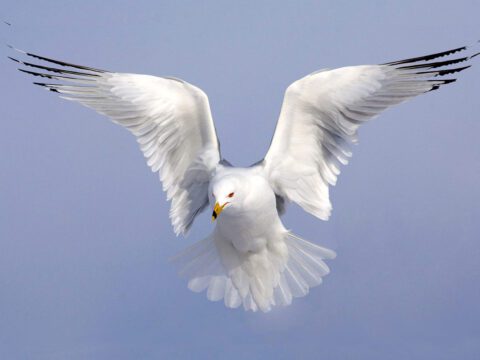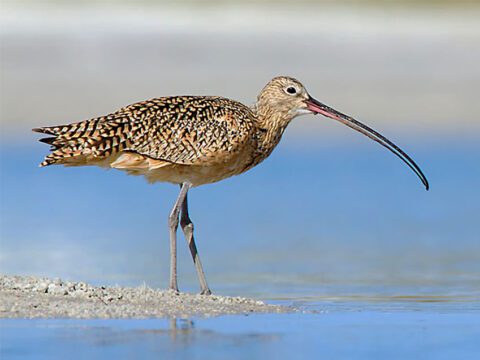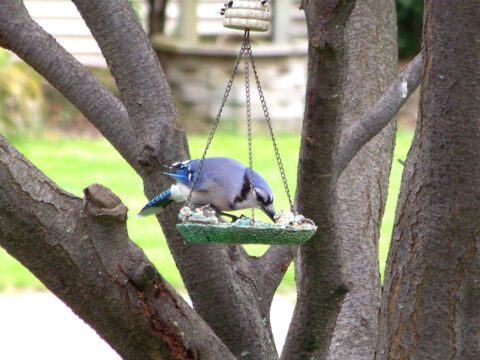A Summit on Cerulean and Golden-winged Warblers in Colombia
By Sara Barker and Ken Rosenberg
January 15, 2009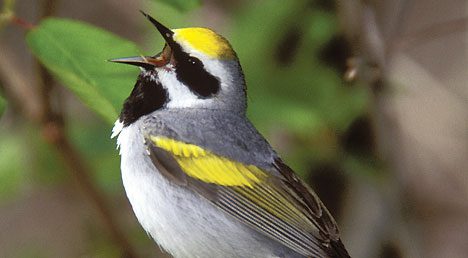
Over the past 10 years the Lab’s Conservation Science Program has focused on two of the most critically threatened, non-federally listed species in eastern North America—the Cerulean and Golden-winged warblers. In late October 2008, as part of an ongoing conservation initiative, several Lab staff joined partners from throughout the Americas in Bogot´ and San Vicente de Chucuri, Colombia, for a joint Cerulean Warbler and Golden-winged Warbler summit, followed by a field course on the ecology of migrant landbirds in the Neotropics (see article below). The goals of this international summit were to increase awareness of the rangewide conservation status of these birds throughout their life cycle, and to build partnerships among industry, farmers, private landowners, and conservationists in the context of economically productive and socially sustainable landscapes that will benefit these birds and help reverse population declines. Outreach and educational opportunities were identified to communicate awareness of nonbreeding-season conservation in Latin America and promote linkages among Western Hemisphere countries. Summit participants drafted conservation plans for both golden-wings and ceruleans on the wintering grounds, incorporating research, management and conservation strategies, educational outreach, regional coordination, and monitoring.
Over 80 participants from nine countries attended talks and poster presentations that covered a variety of themes including migratory connectivity, comprehensive conservation planning, winter range distribution, protocol standardization, community education, and industry involvement. This historic summit was hosted by the Colombian organization Cenicafé, which brought coffee and cacao growers and other industry representatives to the table with scientists to discuss ways in which these two cash crops can benefit wintering migrants, as well as local endemic species, through silvicultural techniques such as integrated shade plantations. Studies have found that shade coffee and cacao support higher numbers of migratory birds than all other agricultural systems in Latin America. A highlight of the meeting was the joint commitment from Cenicafé and U.S. forestry and mining interests to work together toward the long-term conservation of migratory birds.
Lab Conservation Science director Ken Rosenberg gave an opening presentation sharing our collective knowledge of the biology, distribution, and demography of Cerulean Warbler. Sara Barker and Ken also discussed the Lab’s recent approaches to monitoring cerulean and golden-wing distribution and abundance on breeding and wintering grounds, including results from the newly developed Priority Migrant eBird program www.ebird.org/primig. Lab post-doctoral associate Rachel Vallender gave an update on Golden-winged and Blue-winged warbler hybridization throughout the breeding range, noting that the only genetically pure golden-wing populations at present are found in Manitoba! In a closing session, Peter Marra from the Smithsonian Migratory Bird Center put the meeting in the context of the full life cycle of these birds, stressing the importance of understanding connectivity between the breeding and wintering grounds.
After three days of indoor meetings in Bogotá, the researchers headed to Reserva Natural de la Aves Reinita Cielo Azul at San Vicente de Chucuri in the northern Andes. This 545-acre relict of Colombian cloud forest was acquired and established as a reserve by Fundacion ProAves and American Bird Conservancy to protect wintering Cerulean Warblers as well as other threatened migratory and resident species. This was also the site of the field course the following week (see the related article Pooling Skills for Conservation).
After a four-hour bus ride to the village, 400 costumed school children greeted us, parading through the town square to celebrate the arrival of international travelers, both human and avian, to their town!
This migratory bird festival, including presentations by the mayor, traditional music and dancing in our honor, was a stunning and unforgettable finale to our highly successful international summit.
Originally published in the January 2009 issue of BirdScope.

All About Birds
is a free resource
Available for everyone,
funded by donors like you
American Kestrel by Blair Dudeck / Macaulay Library

